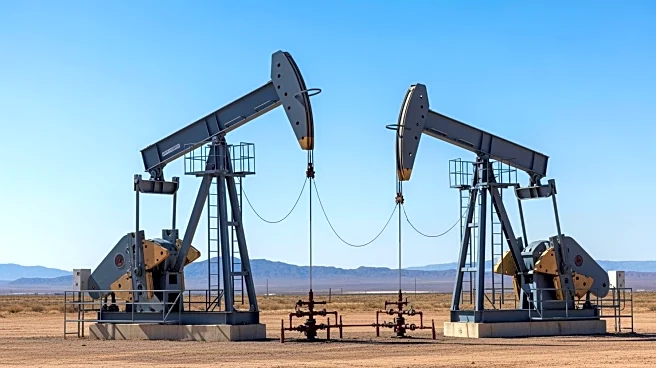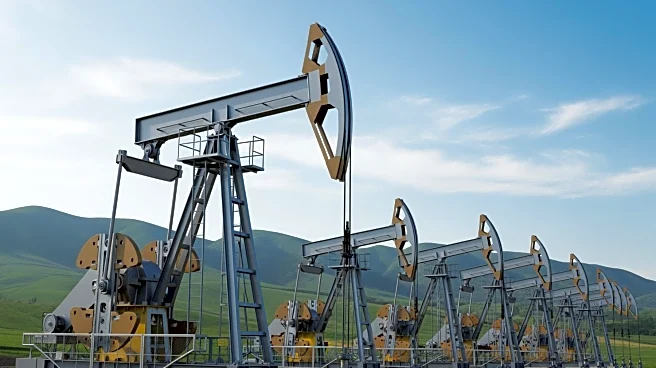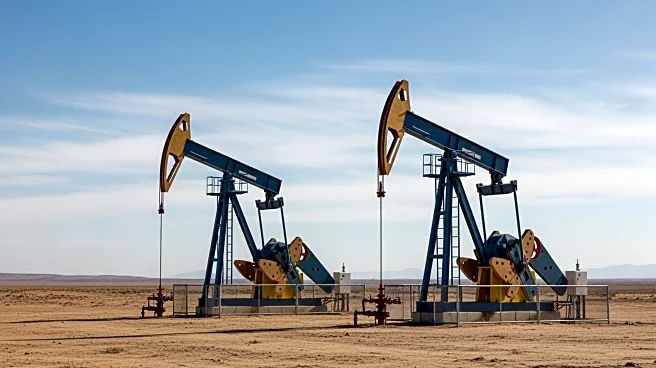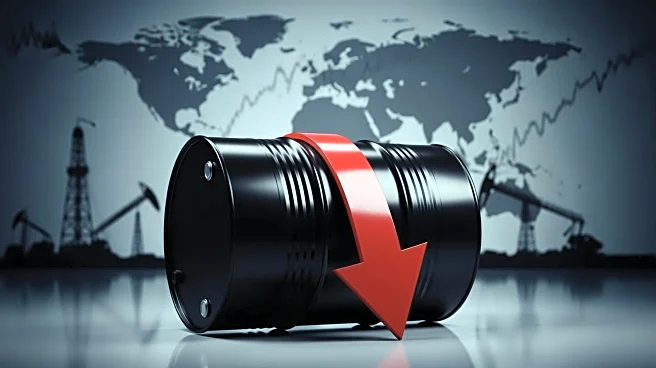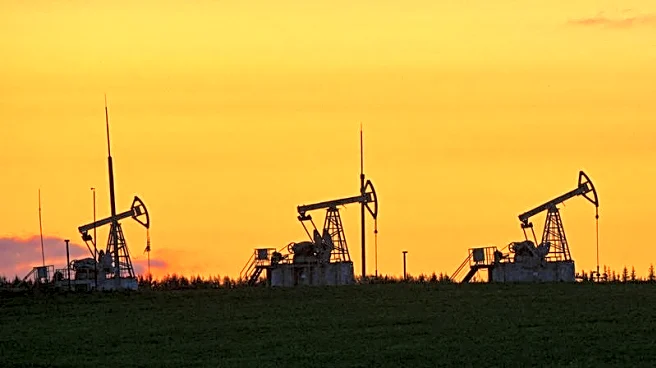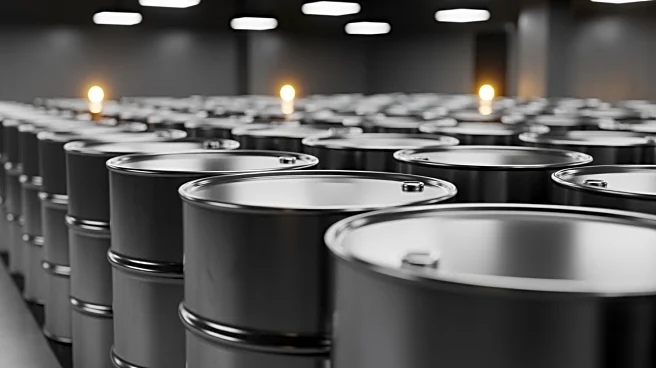What's Happening?
U.S. shale companies are continuing their production plans despite oil prices hovering around $60 per barrel, a level close to the break-even point for many in the industry. Companies like Diamondback
Energy, Coterra Energy, and Ovintiv have announced plans to slightly increase output, leveraging advancements in drilling technology to maintain efficiency. This resilience contrasts with earlier in the year when U.S. production was threatened by falling prices due to increased OPEC supplies and tariffs announced by President Trump. The U.S. Energy Information Administration reported a near-record oil output in August, driven by both shale and Gulf projects.
Why It's Important?
The ability of U.S. shale operators to sustain production at lower price levels underscores the sector's adaptability and technological advancements. This resilience is crucial for maintaining the U.S.'s position as a leading oil producer, impacting global oil supply and pricing. The continued production growth could contribute to an oversupply in the market, potentially driving prices lower. This situation presents both opportunities and challenges for U.S. producers, who must balance production costs with market conditions. The industry's response to price fluctuations will be critical in shaping future investment and production strategies.
What's Next?
U.S. shale operators are expected to continue optimizing production techniques to remain competitive. The potential for an oversupplied market may lead to further price adjustments, influencing future production decisions. Stakeholders will monitor global demand trends and geopolitical developments, such as OPEC's production strategies and international sanctions, which could affect market dynamics. The industry's focus on cost efficiency and technological innovation will likely persist as key factors in sustaining production growth.
